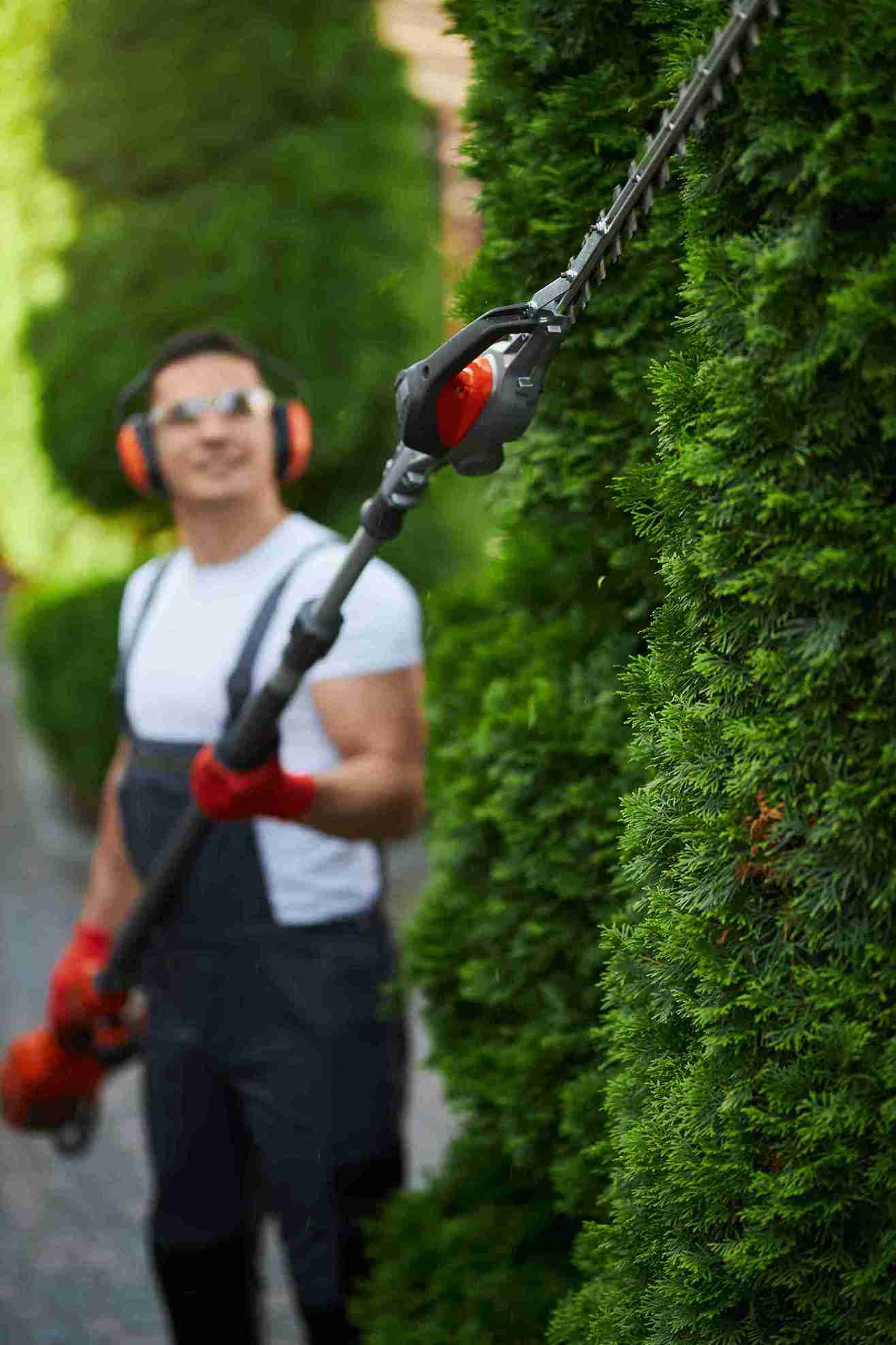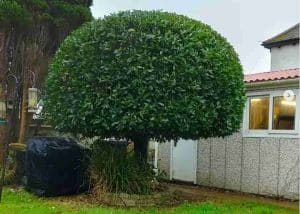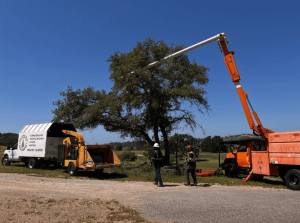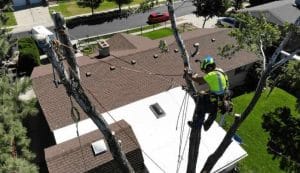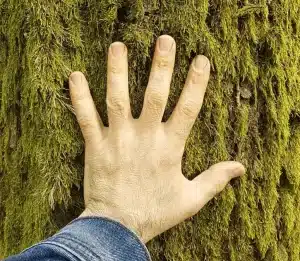The best time to trim trees and bushes is usually in late winter or early spring, when plants are dormant and less likely to suffer stress. Flowering varieties follow a different rule: spring-blooming trees and shrubs should be trimmed right after they finish flowering, while summer bloomers benefit most from pruning before new growth begins in early spring.
Trimming at the right time keeps plants healthy, encourages fuller growth, increases flowers and fruit, and improves safety around your home. If done at the wrong time, pruning can reduce blooms, weaken plants, and make them more vulnerable to pests or damage. This article walks you through the best seasons for trimming, the signs your trees and shrubs need immediate attention, common mistakes to avoid, and the long-term benefits of proper timing so your yard stays safe, healthy, and beautiful.
Table of Contents
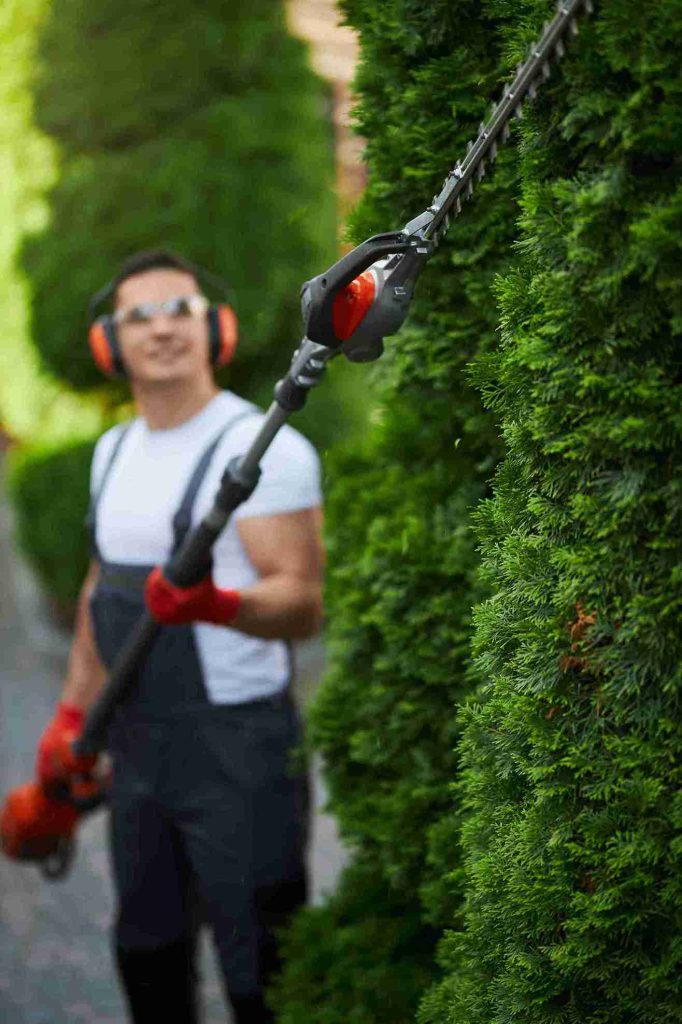
Why Timing Matters for Trimming
Many people think pruning is simply cutting back overgrowth whenever it looks messy. The truth is, plants respond differently depending on when they’re trimmed. Cutting at the wrong time can remove flower buds, shock the plant, or lead to weak regrowth. On the other hand, trimming at the right time can:
- Improve plant health by removing dead, diseased, or crossing branches.
- Encourage stronger growth by directing the plant’s energy where it’s needed.
- Boost flowering and fruit production by preserving buds and stimulating new growth.
- Increase safety by reducing the risk of falling branches and keeping pathways clear.
- Enhance curb appeal with a neat, well-shaped yard that looks cared for.
When thinking about when should you trim trees and bushes, remember that timing is about more than convenience. It’s about giving your plants the best chance to thrive.

The Best Time to Trim Trees
For most trees, the ideal time to prune is late winter through early spring, before new growth begins. Here’s why this works best:
- Dormancy means less stress – Trees are less active in winter, so trimming doesn’t interrupt their growth cycle.
- Faster healing – As soon as spring arrives, the tree puts out new growth that quickly seals wounds from cuts.
- Better visibility – Without leaves, it’s easier to see the tree’s structure and make precise cuts.
Seasonal Breakdown for Trees
- Winter (January–March): Best for most deciduous trees. Removes weak or diseased branches before growth restarts.
- Spring (April–May): Ideal for fruit trees, right after blooms, to encourage strong harvests.
- Summer (June–August): Light trimming only, usually for storm damage or slowing growth.
- Fall (September–November): Avoid heavy pruning—cuts may not heal before frost.
Exceptions to the Rule
- Flowering trees (like magnolia, cherry, or dogwood): Trim after flowering, not before, to avoid cutting off buds.
- Evergreens: Can be shaped lightly almost any time but respond best to trimming in late spring.
- Storm damage: Hazardous branches should be removed immediately, no matter the season.
The Best Time to Trim Bushes
Bushes, shrubs, and hedges all have slightly different needs, but the timing principle is the same—trim according to growth and bloom cycles.
- Spring-flowering bushes (azaleas, lilacs, forsythia): Prune right after flowers fade. Cutting too early removes buds for next year.
- Summer-flowering bushes (crape myrtle, butterfly bush, hydrangea): Trim in late winter or early spring, before new growth.
- Evergreen shrubs (boxwood, holly, juniper): Can be trimmed in spring and again mid-summer to maintain shape.
A Simple Rule of Thumb
If it flowers in spring, prune it right after it blooms. If it flowers in summer, prune it in late winter or early spring. Following this rule keeps you from accidentally cutting away future flowers.
Signs Your Trees and Bushes Need Trimming Now
Even if the season isn’t perfect, sometimes trimming is urgent. Watch for these signs:
- Dead or broken branches that could fall and cause damage.
- Branches rubbing together, which creates wounds and invites disease.
- Bushes blocking sunlight from reaching lawns or gardens.
- Shrubs growing over walkways or driveways, making them unsafe.
- Tree limbs too close to roofs or power lines, risking property damage.
Addressing these issues right away protects your plants and your home.
Common Trimming Mistakes to Avoid
One of the biggest problems with tree and bush care is not just when to trim, but how. Mistakes can lead to weak growth, plant stress, or even death. Here are errors to avoid:
- Cutting too much at once – Removing more than 25–30% of a plant in one season can shock it.
- Topping trees – Chopping off the top of a tree ruins its structure and encourages weak, unhealthy regrowth.
- Using dull tools – Blunt blades leave jagged wounds that heal slowly.
- Pruning in late fall – Cuts made too late encourage new growth that frost can kill.
- Ignoring natural shape – Over-trimming into unnatural shapes weakens plants.
By trimming carefully and at the right time, you’ll avoid long-term problems.
Seasonal Guide for Trimming
A year-round approach works best. Here’s a simple seasonal checklist:
- Winter: Trim most deciduous trees and shape summer-blooming shrubs.
- Spring: After blooms, trim flowering trees and spring shrubs. Lightly prune evergreens.
- Summer: Remove storm-damaged branches. Lightly shape fast-growing hedges.
- Fall: Limit trimming to removing dead or dangerous branches. Save heavy pruning for later.
This plan ensures every plant in your yard gets attention at the right time.
Tools That Make the Job Easier
The right tools make trimming safe and effective. A basic set includes:
- Hand pruners: Best for small branches and twigs.
- Loppers: Great for medium branches up to two inches thick.
- Pruning saw: Handles larger limbs with ease.
- Hedge trimmers: Manual or powered, perfect for shaping shrubs.
- Safety gear: Gloves, safety glasses, and sometimes a hard hat for larger trees.
Keep tools sharp and disinfect them after each use to prevent spreading plant diseases.
Benefits of Trimming at the Right Time
When you time pruning correctly, the payoff is big. You’ll notice:
- Healthier trees with fewer dead or diseased branches.
- More flowers and fruit on blooming trees and shrubs.
- Safer yards with fewer hazards from falling limbs.
- Cleaner curb appeal that makes your property more inviting.
- Lower maintenance costs since healthy plants require fewer treatments and repairs.
These benefits compound over time, making trimming one of the best investments you can make for your yard.
How to Build a Trimming Routine
Consistency matters as much as timing. Instead of waiting for problems, create a simple routine:
- Walk your yard once a season to check for damage, overgrowth, or blocked light.
- Trim as needed based on the seasonal guide above.
- Keep notes about which plants flower when, so you remember the right timing.
By making trimming a routine, you’ll avoid guesswork and keep your landscape in top shape year-round.

Conclusion
The best time to trim trees and bushes is late winter or early spring, when plants are dormant and able to heal quickly. Spring-blooming shrubs should be trimmed right after flowering, while summer bloomers benefit from pruning before new growth begins. Evergreens and hedges can be shaped lightly during the growing season, but heavy cuts should always be timed with plant health in mind.
By following seasonal guidelines, avoiding common mistakes, and keeping a regular trimming routine, you’ll encourage stronger growth, healthier plants, and more beautiful blooms year after year. Proper timing also improves safety by reducing the risk of falling branches and keeping pathways clear.
When you understand exactly when to trim, your yard becomes easier to manage and more rewarding to enjoy. A little planning goes a long way—ensuring your trees and bushes stay healthy, your landscape looks its best, and your outdoor spaces remain safe and welcoming in every season.
FAQs
What is the best month to trim trees and bushes?
The best months are usually late winter to early spring, when most plants are dormant and less likely to suffer stress. This timing helps wounds heal quickly as new growth starts.
Can you trim trees and bushes in summer?
Yes, but only light trimming. Summer pruning works well for shaping fast-growing bushes or removing storm-damaged branches, but heavy cuts should wait until dormancy.
Is it bad to trim trees and bushes in the fall?
Yes, heavy trimming in fall is not recommended. Fresh cuts may stimulate new growth that won’t harden before frost, leaving plants vulnerable to cold damage.
When should I trim flowering bushes?
It depends on when they bloom. Spring-flowering bushes should be trimmed right after they bloom, while summer-flowering bushes are best trimmed in late winter or early spring.
How often should I trim my bushes and hedges?
Most hedges and bushes need trimming one to three times a year. Fast-growing shrubs may need more frequent shaping during the growing season.
What happens if you trim trees or bushes at the wrong time?
Pruning at the wrong time can remove flower buds, weaken the plant, and increase the risk of pests or disease. It may also slow recovery and reduce growth.
What tools do I need to trim trees and bushes?
You’ll need hand pruners for small branches, loppers for thicker ones, pruning saws for large limbs, and hedge trimmers for shaping. Always keep tools sharp and clean.
